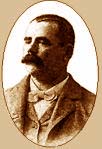
Click image to "step into the picture" and begin "working the room" through 9 close-up views.
In late October 2006, former NYC DOC Assistant Commissioner for Training Dr. Jess Maghan, Ph. D., generously gave the New York Correction History Society (NYCHS) a package of historical materials that included several back issues of The Keepers' Voice, the International Association of Correctional Officers journal he edited 15 years.
Both were in a tattered brown paper sleeve that had apparently been used and reused to hold other correction photos. On the sleeve, written in pencil, were dates, such as 1938 and 1942, and NYC Correction facility names as Rikers, Tombs, Potter's Field, and Graycourt. All the dates and photo titles in pencil had been lined through, also in pencil. Not lined through was the phrase "Keepers Ball 1906" written in large script with black ink marker pen. No other details. Thus began NYCHS research into the photo to find what bits of history it might reveal or illustrate. NYCHS scanned the photo print at 900 dots per inch (dpi). That is about 14 times higher resolution than the standard for web images. The resulting high resolution on-monitor image enabled "zooming in" for close-up views so that faces and other details become clearly distinguishable. A series of 9 close-up views of the assembled keepers can be accessed by clicking the above digital 72 dpi copy of the photo. Each of the 9 close-up view pages comes with a detailed commentary on the people and objects in that particular section.
NYCHS counted the number of individuals in each close-up. Discounting for "overlaps," where an individual appearing in one close-up view might also appear in another, the total count comes to about 170 -- all males. That raises a question whether the event was actually a ball (that is, a formal dance) or, in effect, a stag dinner. Keep in mind that NYC DOC's relatively few female custodial staffers back then were not "keepers" either in job title or in pay scale. They were "matrons" whose pay did not keep comparable pace with the keepers. A veteran matron would be paid significantly less than a keeper many years her junior in terms of years of service.
The Correction Officers Benevolent Association of our own era may have ancestral links to "Keepers' Mutual Benevolent Organization" of the early 1900s, but the latter never attained collective bargaining union status that COBA did.
Even so, COBA's forerunners -- including the Prison Keepers Council and Prison Keepers Association (see two images left) -- maintained such a strong sense of solidarity among their members that management, when proceeding prudently, would take it into consideration when setting policies and implementing them. The Terrace Garden, identified on the photo as its setting, was part of a complex -- theatre, ballroom, open-air garden, and a genteel bowling alley with some evenings "reserved for ladies" -- from East 58th to East 59th Street near Lexington Ave. The complex was generally referred to as the Lexington Opera House/Terrace Garden. The New York Public Library website has two excellent images related to the opera house/garden complex. One shows the complex with horse-drawn carriages passing in front.
The other New York Public Library image of related interest is from NYPL's Buttolph Collection of menus. It's a floral design special Terrace Garden "Ladies' Prize Bowling Menu" dated Tuesday, Feb. 18, 1890. The opera house/ballroom/garden restaurant/bowling complex -- long gone from the scene -- was mentioned in a relatively recent (July 9, 2006) New York Times "what's-in-a-name" kind of article by veteran journalist Sam Roberts writing about the site of the former complex. Noting how some business tenants spend millions for naming rights to their headquarters buildings. Roberts pointed out by contrast that well before being elected NYC Mayor, Michael R. Bloomberg had decided, in signing his business headquarters' lease in early 2001, not to seek that kind of name identity for the building.
Formerly the site of Alexander's, the official street address is 731 Lexington Avenue. The residential tower of the building, which occupies the full block between Third and Lexington Avenues and 58th and 59th Streets, is marketed as One Beacon Court. Roberts quotes a spokesman for the building's landlord explaining the process by which, while the structure was going up, the principals came to pick One Beacon Court as the marketing name: "First, we looked at history and at names associated with the block: the Lexington Opera House/Terrace Garden, Finkenberg's Furniture, Liederkrantz Hall, Daniel Winken's Brewery, the Lido Bowling Recreation Arena and Proctor's Pleasure Palace, a theater." The spokesman said "Court" was inspired by the courtyard, and "Beacon" by the illumination of the upper stories of the tower.
Photographing a large group in a way that the many individuals in it are distinguishable poses various technical difficulties, including devising the proper amount and distribution of lighting. That's true even today but was much more so back a century ago when electric lighting was not commonplace. For example, in 1906 only about 8 percent of American homes had electricity. "Electrification" within NYC was a bit more widespread than the rest of the country. After all, it got started here in 1882 at the Pearl St. power station of Thomas Edison (image, above right). Still, most of those homes hooked into a power line only used it evenings when they turned on their light bulbs.
The absence of our modern era air conditioning in the Terrace Garden banquet room is quite evident from the photo even if one didn't see the date on it. Six large circular panels in the walls near the ceiling and a few of the windows on the far side are open to let the night air help ventilate and cool the room that Tuesday summer evening (see image detail above left).
The powder was his own mixture producing more light and less smoke than theretofore in the banquet photography field. Ever the inventor and innovator, Lawrence also designed his own cameras for large format, banquet and panorama work. By definition, panorama photography involves getting above the subject. At a banquet, that means using a ladder or scaffold or other device to position the camera looking down on the group at just the correct angle "to get everyone's head into the picture."
Lawrence obviously had an appetite for altitude. He went from taking photos of banquets to doing panoramas of whole cities, and eventually turned from photography to aviation, becoming one of America's early airplane designers and builders. In 1906, while his company still engaged in banquet photography around the country, he personally oversaw the expansion of his business into doing urban panoramas.
Only a month before Geo. R. Lawrence Co. photographed the NYC correction keepers June 19, 1906 dinner, Lawrence used what he called his "Captive Airship" -- a camera suspended from kites and connected to a wire controlling the shudder from the ground below -- to take THE universally-acclaimed definitive photo (above) of what San Francisco looked like a few weeks after its great earthquake of April 18, 1906. The view into the sunset was from 2,000 feet above San Francisco Bay. The Frisco quake wasn't the sole news of note in '06 of a century ago. To a mention just a very few items that may help give some historical perspective, that year saw the following happen: Czar Nicholas dissolved the Duma, launching repressions that may have hurried the Russian Revolution. Finland became the first country in Europe to grant women the right to vote. French courts exonerated Alfred Dreyfus. Congress enacted food, drug and meat inspection laws. The U.S. occupied Cuba upon request.
The states that TR left to visit the Canal numbered 45. At that time, still to be admitted into the Union were Oklahoma, New Mexico, Arizona, Alaska and Hawaii. Since patriotic bunting does not have to follow the rules that apply to the American flag, the count of stars in the blue fields of the bunting on the far wall of the banquet room exceeded the number of states in the union at the time. Clearly recognizable in the middle of the bunting are ladies Liberty and Justice of the NYS Seal.
At the time of the keepers dinner, Lantry was serving his second stint as Correction Commissioner. His first came during the administration of Tammany-backed Robert A. Van Wyck, the first Mayor of 5-borough Greater New York. He was among Van Wyck's first appointments Jan. 1,1898. Lantry -- variously a butcher, a butchers' union leader, and an Alderman -- also was the Tammany leader in the 16th District where Mayor Van Wyck lived. After scandals during the Van Wyck administration inspired anti-Tammany forces to unite again, the Fusionists successfully fielded Columbia University president Seth Low as their mayoral candidate in 1901. He named Thomas W. Hynes to replace Lantry in 1902. When Tammany's nominee, George B. McClellan, son of the famous Civil War general and Presidential candidate, defeated Low in the mayoralty of 1903, Lantry was reappointed DOC Commissioner Jan. 1, 1904, thus the only NYC Correction Commissioner ever to serve twice. Lantry was appointed the Fire Commissioner by Mayor McClellan on Oct. 10, 1906; that is about four months after the keepers' dinner. He was the NYC's 5th fire commissioner. Lantry served in that position until he resigned on February 10, 1908.
If so, any guests of honor in attendance might have been invited to move temporarily to the first table closest to the camera. That possibility opens the way to interesting speculation about the first few gentlemen at that table shown quite clearly in Close-up View #9. While no one there among them much looks like Mayor McClellan, the very first gentleman at the table closest to the camera looks quite remarkably like the sketch of NYC Correction Commissioner Lantry. The distinguished gentleman opposite him at the table bears some resemblance to Gov. Higgins. What do you think? |
---
To 1906 photo Close-up View #1 of 9 ---
To 1906 photo Close-up View #9 of 9
--
---
To NYC DOC history menu --
-- To NYCHS
home page --

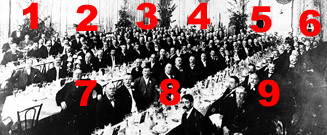


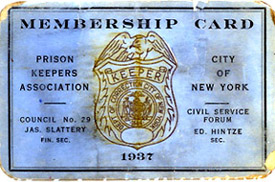


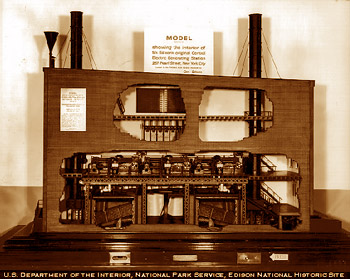




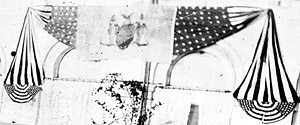
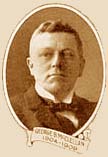
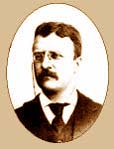
 xx
xx
 xx
xx